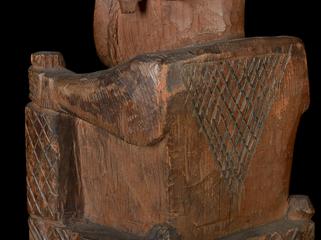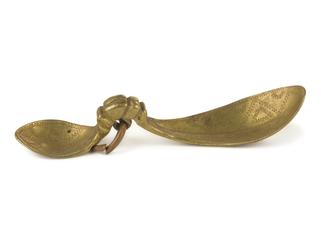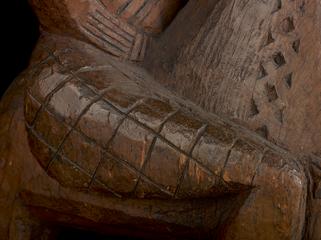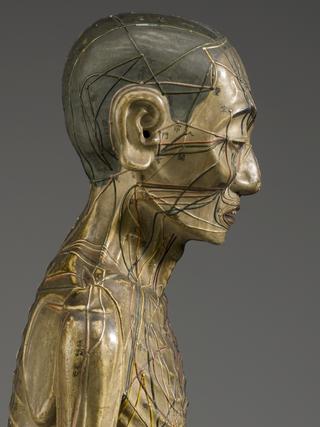
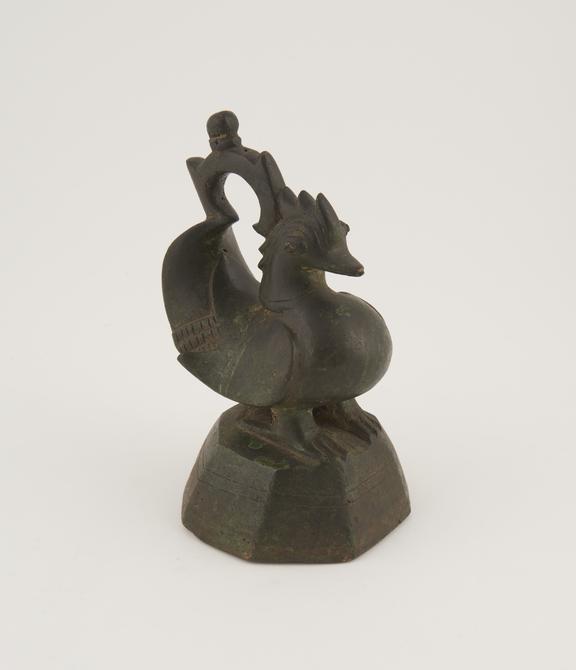
Bronze 'opium' weight in the form of a bird, 9kg, Burmese, possibly dating to the 19th century
This type of bronze Burmese weight in animal form is often improperly identified as an ‘opium weight’. Traditionally produced in Myanmar (old Burma), Thailand and Laos, these weights were widely used from the sixteenth to early twentieth centuries.The term ‘opium weights’ was likely coined by foreigners or to promote the sale of souvenirs. Although the smallest of these animal weights could have been used to weigh opium, they were made for everyday use, such as weighing foods, raw materials, and metals.
A complete set usually consisted of ten pieces, starting from very small weights to much larger sizes. The weights were produced in a variety of designs, based on animals or creatures from local religion and mythology. The most common shape is this one, known as the hintha bird (or Brahminy duck).
The popularity of opium weights led to the production of fakes and imitations in the past, and many reproduction can still be found in shops today.
During the 19th century, larger weights such as 10 and 5 vis (1.65kg) became more popular. Such weights also have handles to help with the lifting. This suggest that this object could be a later example, and therefore the date range has been narrowed down to the 19th century.
Details
- Category:
- Asian Medicine
- Object Number:
- 1985-1138
- Measurements:
-
overall: 210 mm x 120 mm x 120 mm,
- type:
- weight - scale component
- credit:
- Sotheby's
